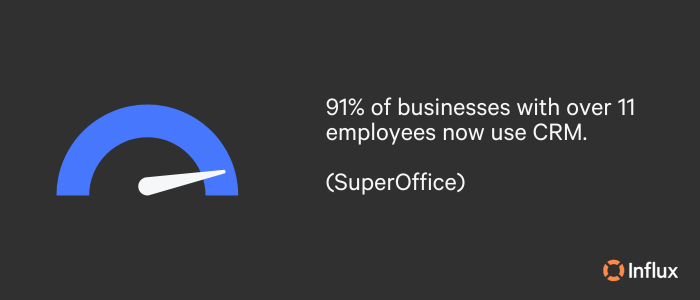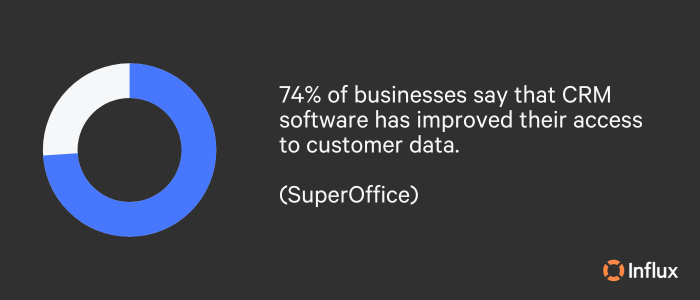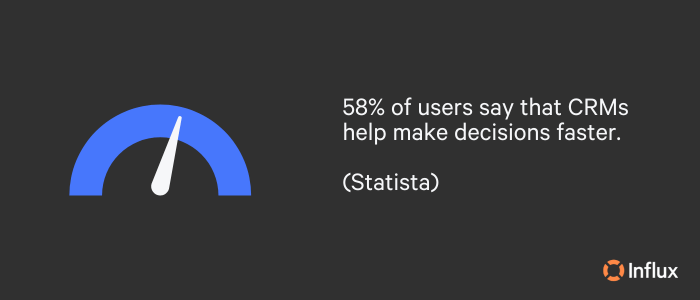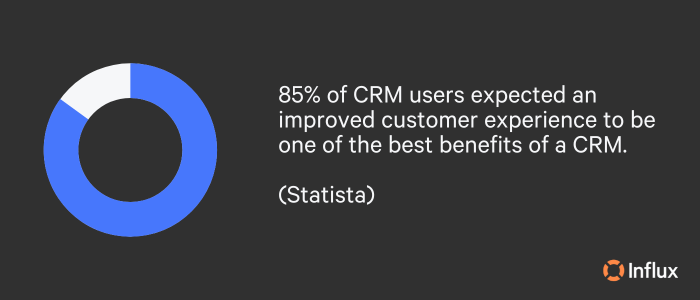Customer support is not just a department; it's a philosophy of putting customers first and exceeding their expectations at every interaction. Are you looking for customer support assistance? Influx support teams scale with you.Get a quote!
Building and maintaining excellent customer relationships is at the heart of any good business model. Given the importance of effective customer service, it's no surprise that many businesses invest in customer relationship management (CRM). As your team and customer list grow, things can quickly get out of hand. Use these eight best practices to keep your CRM software performing at a pinnacle!
What is CRM?
CRM, short for customer relationship management, refers to the strategies, practices, and technologies companies use to manage customer interactions throughout the entire customer lifecycle. While the term describes a larger strategy of interactions with customers, the acronym CRM is commonly used to identify the category of products that enables effective customer relationships.
CRM aims to improve customer satisfaction, retention, and loyalty by providing personalized experiences. Understanding customer needs and preferences enables companies to anticipate and proactively address issues, identify potential customers, and target them with customized marketing and sales messages, leading to increased conversion rates and revenue.
Overall, CRM is important for businesses because it helps them build better relationships with customers, which can lead to increased profitability and long-term success. Our global support teams can help you manage customer relationships and turn one-time purchasers into life-long customers. Our end-to-end management system allows us to hire, onboard, train, and scale teams quickly to save you time and money. Nurture your customer relationships with support on demand!
 {: width="700" height="300"}
{: width="700" height="300"}
CRM software best practices
A good customer relationship management (CRM) system assists businesses in managing customer data and streamlining sales processes. However, the technology that makes up CRM will only go so far. Ensure you get the most out of your CRM system with these best practices!
1. Choose the right CRM software
Before selecting a CRM system, clearly define your goals and objectives. What are you looking for in a CRM? Do you need highly customizable features, or will basic functionality suffice? What is your budget? Then, once you've gathered this information, decide which type of CRM suits your requirements.
There are three CRM solutions: operational, analytical, and collaborative. In the research phase, understanding the differences between these three types of CRM systems is essential. Operational CRMs streamline customer relationships and save time by automating processes. Analytical CRMs gather data for analysis that helps you deliver top-tier customer support. Collaborative CRMs combine sales, marketing, and service teams to understand your customers' needs better. This allows different departments to share information and offer a seamless customer experience.
While there is some overlap between the three types of CRM systems, each focuses on specific functions and features. Choosing the right type of CRM depends on your business objectives, but there are a few components to look for when deciding which software is ideal. Is the software easy to set up and easy to learn? Does the system integrate with the products you already use? Do the reporting features match what you're looking for? Does the CRM have the capacity to scale, i.e., how easy will it be to add new customers or employees?
2. Train your team
Statistics from Forester have shown that 50% of teams improved their productivity using a CRM. However, a CRM system is only effective if your team knows how to use it. Provide comprehensive training to ensure all users understand the system and its features. A proper understanding of how CRM software functions can make everyone's job easier by keeping customer information in one place. Encourage ongoing education, stay up-to-date on new features, and provide training to new employees or those needing a refresher.
Take the headache out of hiring with global support teams fully managed by us. We integrate with your existing helpdesks, social channels, and workflow to deliver support that's on brand, at scale, and above all, on every channel. Get a quote!
 {: width="700" height="300"}
{: width="700" height="300"}
3. Lean on automation
CRMs are intended to assist your business by making it easier to handle customer relationships. Because of this, many of the tasks associated with data entry can be automated. CRM automation is just like other automation. It is a method of automating necessary but repetitive manual tasks to streamline processes and improve productivity.
Tasks to automate include:
- Data entry automation
- Personalized email sequences
- Log all customer interactions
- Customer service automation
A Zapier report showed that 94% of workers say they perform repetitive, time-consuming tasks in their role. Free up valuable time and reduce the chance of errors with automation.
4. Customize the software to fit your needs
Customizing CRM software can be complex, but it is essential to tailor the system to meet your needs. Most CRM software offers customization options such as adding or removing fields, changing workflows, and creating custom reports. Evaluate these options to determine which ones meet your requirements. Then, modify the system to match your specific workflows, processes, and goals. This will help you maximize the benefits of the system and improve efficiency.
5. Ensure data accuracy
CRM data quality refers to how valuable the information you track within your system really is. It measures the condition of data based on factors such as accuracy, completeness, consistency, reliability, and whether it's up to date. Poor data quality can result in a negative customer experience and waste employee time. Poor data quality includes duplicate data, incorrect or expired data, or missing data. According to Kissmetrics,
Businesses lose as much as 20% of revenue due to poor data quality.
Your CRM system is only as good as the data it contains. Ensure that your customer data is accurate, complete, and up-to-date. Keep data efficient by maintaining the accuracy of your CRM and guaranteeing that it is the source of truth for your organization. As a best practice, schedule regular data audits. Clear everything from incomplete phone numbers to duplicate records that may affect productivity or customer experience.
 {: width="700" height="300"}
{: width="700" height="300"}
6. Integrate with other business systems
Your CRM system should not exist in a silo. One of the best ways to take advantage of a CRM system's benefits is to integrate it with your other systems. On its own, CRM software can function independently. However, to maximize its potential, integrate it to work directly with your other systems.
A CRM integration is the seamless connection between your CRM software and third-party applications. Here are a few examples of the applications you can and should integrate:
- Marketing channels
- eCommerce
- Customer service
- Social media
- Calendars
- Prospecting software
- Team communication
CRM integration helps you create a seamless experience across all customer touchpoints through better communication and customer care. Consolidating information makes a smoother workflow at a larger scale when employees don't need to log in and route between multiple systems.
7. Monitor and measure performance
Monitoring and measuring the performance of your CRM system is essential to ensure that it meets goals and objectives. Analyze data to identify trends, patterns, and opportunities for improvement. This will help you optimize your customer interactions and drive growth.
Some common KPIs for CRM software include customer acquisition rate, customer retention rate, customer satisfaction score, and sales conversion rate. Use the insights gained from analyzing the data to make data-driven decisions that will improve the performance of your CRM system. For example, if you notice that the customer retention rate is decreasing, you may need to improve customer service or introduce loyalty programs.
Finally, it is essential to regularly review the performance of your CRM system and make adjustments as needed. The market and customer needs are constantly changing, and your CRM should evolve accordingly.
 {: width="700" height="300"}
{: width="700" height="300"}
8. Celebrate wins and keep improving
Improving a CRM system is an ongoing process. Continuously collect data, analyze results, and refine your strategies to improve customer satisfaction and drive business growth.
Deliver a quality customer experience
Developing and maintaining relationships with customers is essential. To do that, customer support needs to exceed expectations. Our support teams offer a flexible, long-term solution for your business that can be integrated into an existing workflow and team structure. Get a quote now!

 6 Circle - small.png)